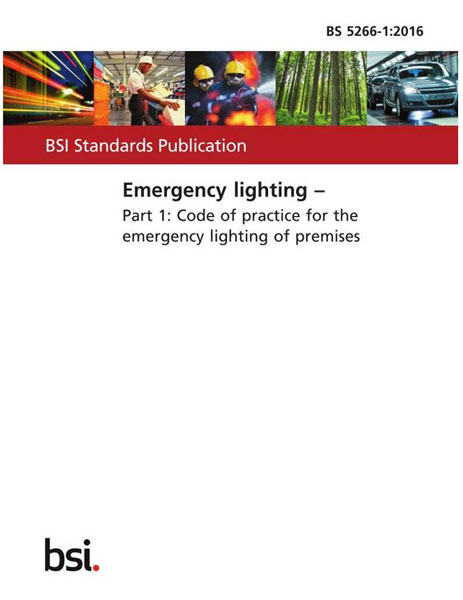What is BS 5266?
 BS 5266 gives gives detailed guidance on the application and practice of emergency lighting. The standard’s recommendations have been drawn up to encourage uniformity of application, based on providing adequate safety to people in the event that normal lighting is interrupted.
BS 5266 gives gives detailed guidance on the application and practice of emergency lighting. The standard’s recommendations have been drawn up to encourage uniformity of application, based on providing adequate safety to people in the event that normal lighting is interrupted.
The standard aims to promote a wider understanding of the different types of emergency lighting system that can be used and give guidance on how different systems can be correctly applied to different categories of premises with varied requirements.
What's changed in BS 5266-1: 2016?
There have been changes to keep the document aligned with national and European standards.
The revised standard introduces the concept of 'Emergency Safety Lighting' or 'Stay Put Lighting' in response to the increasing recognition of the application of emergency lighting to assist the safety of occupants who may stay in a building during a failure of mains power supply. BS 5266 provides risk assessors with guidance on where this kind of emergency lighting might be appropriate
This article focuses solely on the concept of Emergency Safety Lighting. BAFE have produced a handout detailing changes made throughout the document.
What is Emergency Safety Lighting designed to do?
Emergency Safety Lighting should help occupants continue normal operations in the event of failure of the supply to normal lighting.
In 'high risk task areas' the illuminance value should not be less than 10% of the average of the normal lighting at the location of the risk. In some applications, such as hospital operating theatres, 100% of normal lighting levels may still be required.
If Emergency Safety Lighting is present can occupants stay in the building?
Only if it is safe to do so and the risk in remaining is minimal. For example, if there is adequate daylight in a building then the risk in staying put may be deemed to be slight. Occupants will be allowed to stay in the premises until there is less that 1-hour duration left in the emergency lighting or the system allows occupants to be directed or escorted to a low risk location.
How should this kind of lighting be factored into emergency planning?
The emergency action plan, if there is a stay put solution should make it clear how long can occupants stay and how the end of the 'stay put' period will be indicated. The plan should also make clear what happens at the end of the emergency duration and how will occupants will be directed to safe refuges.A maintenance plan also needs to be established, even if Emergency Safety Lighting is self-testing.
Image: Fire Exit by Stefan Ray. Reproduced under a Creative Commons licence.


